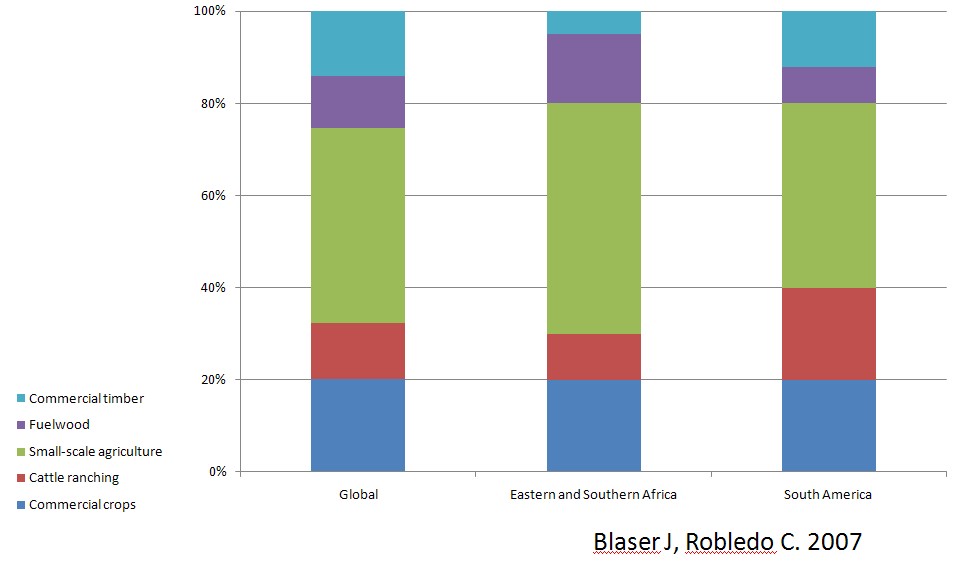In an official side event to the UNFCCC 34th session of the Subsidiary Body for Implementation (SBI) and the Subsidiary Body for Scientific and Technological Advice (SBSTA) some interesting presentations had been given by the speakers.
Lini Wollenberg came up with some very interesting facts:
| Deforstation varies regionally |
- 9 billion people by 2050—require 70 to 100% increase in food
- But only about additional 10% of current arable, non protected land will be available (445 Mha) (Lambin2011)
-
Integrated action across REDD+ and agriculture will help mitigation and food security
- Sustainable intensification: increasing crop yields per area to reduce pressure for forest conversion
- Sustainable agricultural land management to reduce emissions and increase food production and resilience
- Target expansion to rehabilitated degraded areas
- Diverse agroforests, forest-fallow or high-carbon and high-biodiversity production systems
Peter Holmgreen rounded up the picture:
Mr. Holmgreen rightly claims that REDD+ shouldn't mainly focus on logging activities but on land use change activities because of agricultural needs (read here as well). Where we differ, however, is on one of the action sample at Slide 7.
Mr. Holmgreen, in this particular case, is in the oppinion that "reducing sustainable forest management" can help to meet Climate Change mitigation.
We completely disagree with this statement as we belive, in fact, that promoting sustainable forest management is a powerfull and effective tool for climate change mitigation.
---------------
Agriculture is the key to curb deforestation


